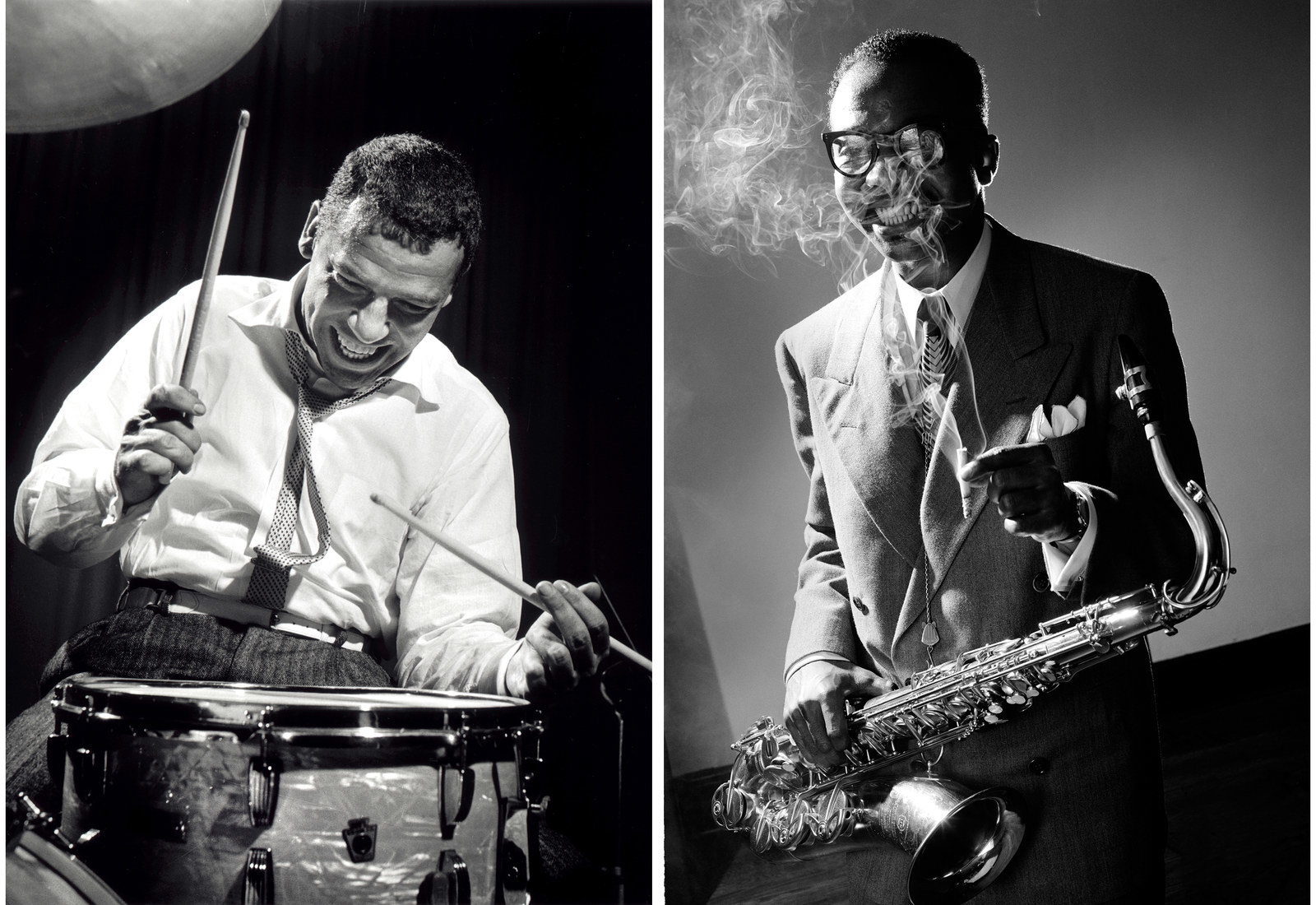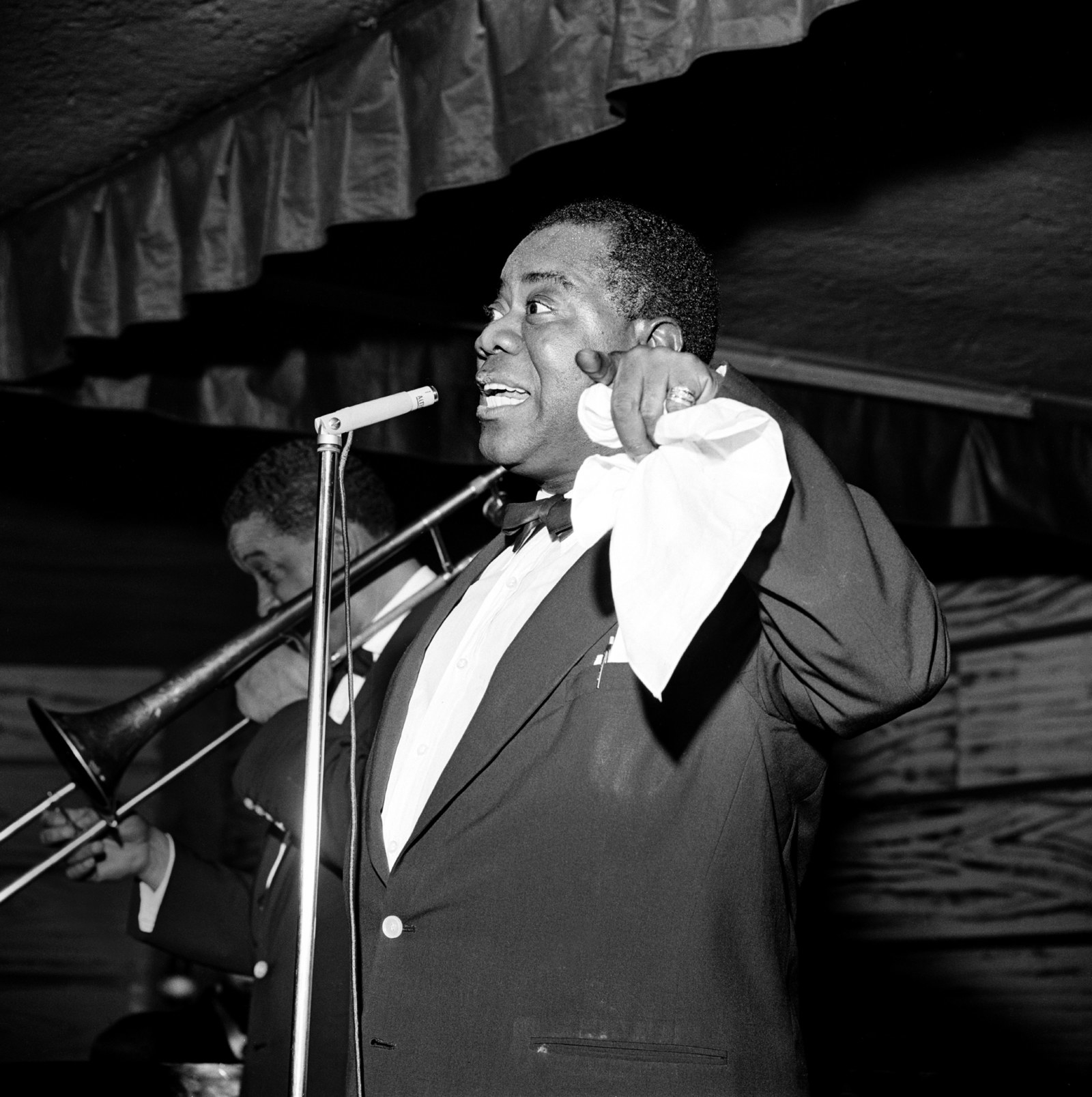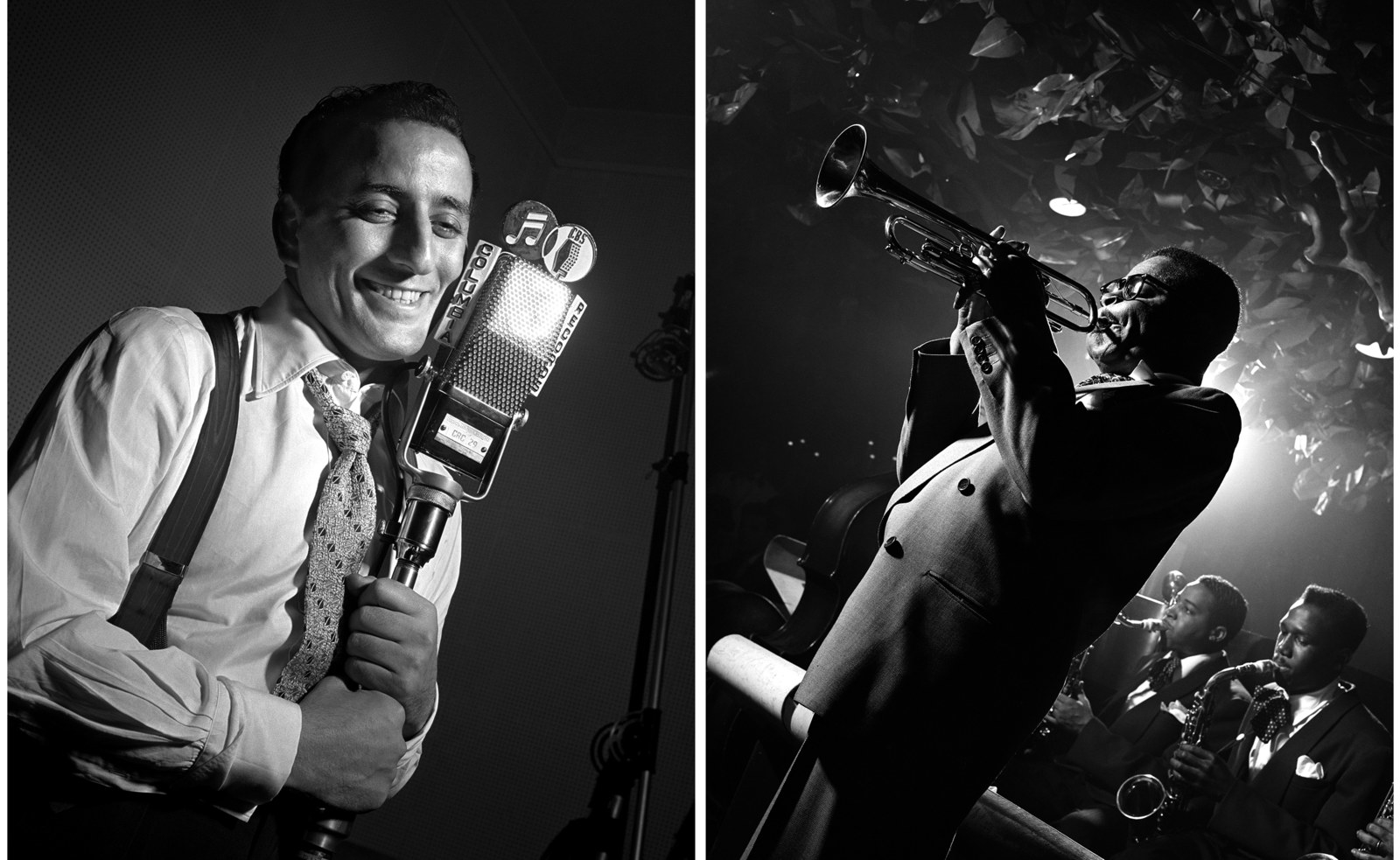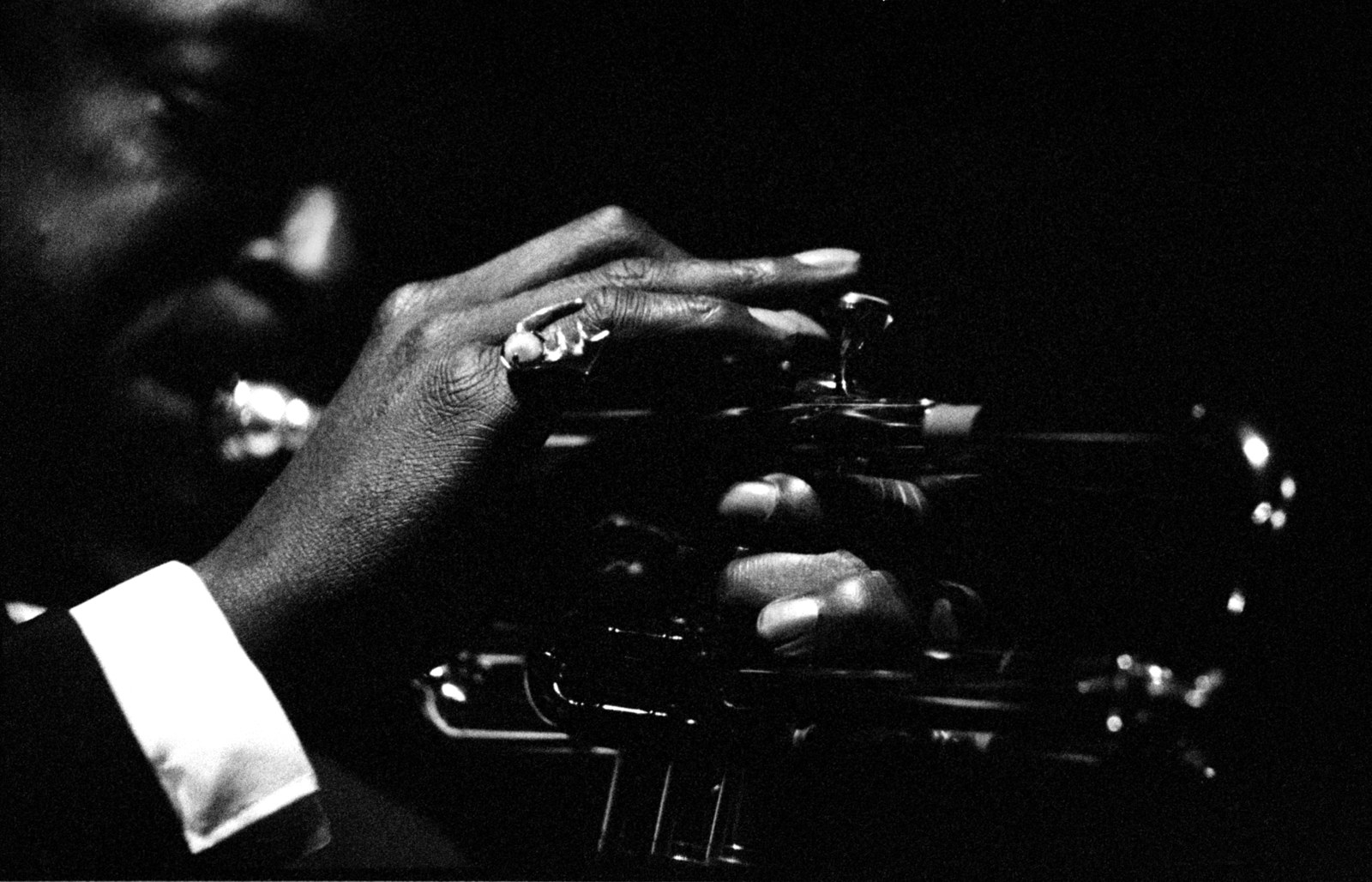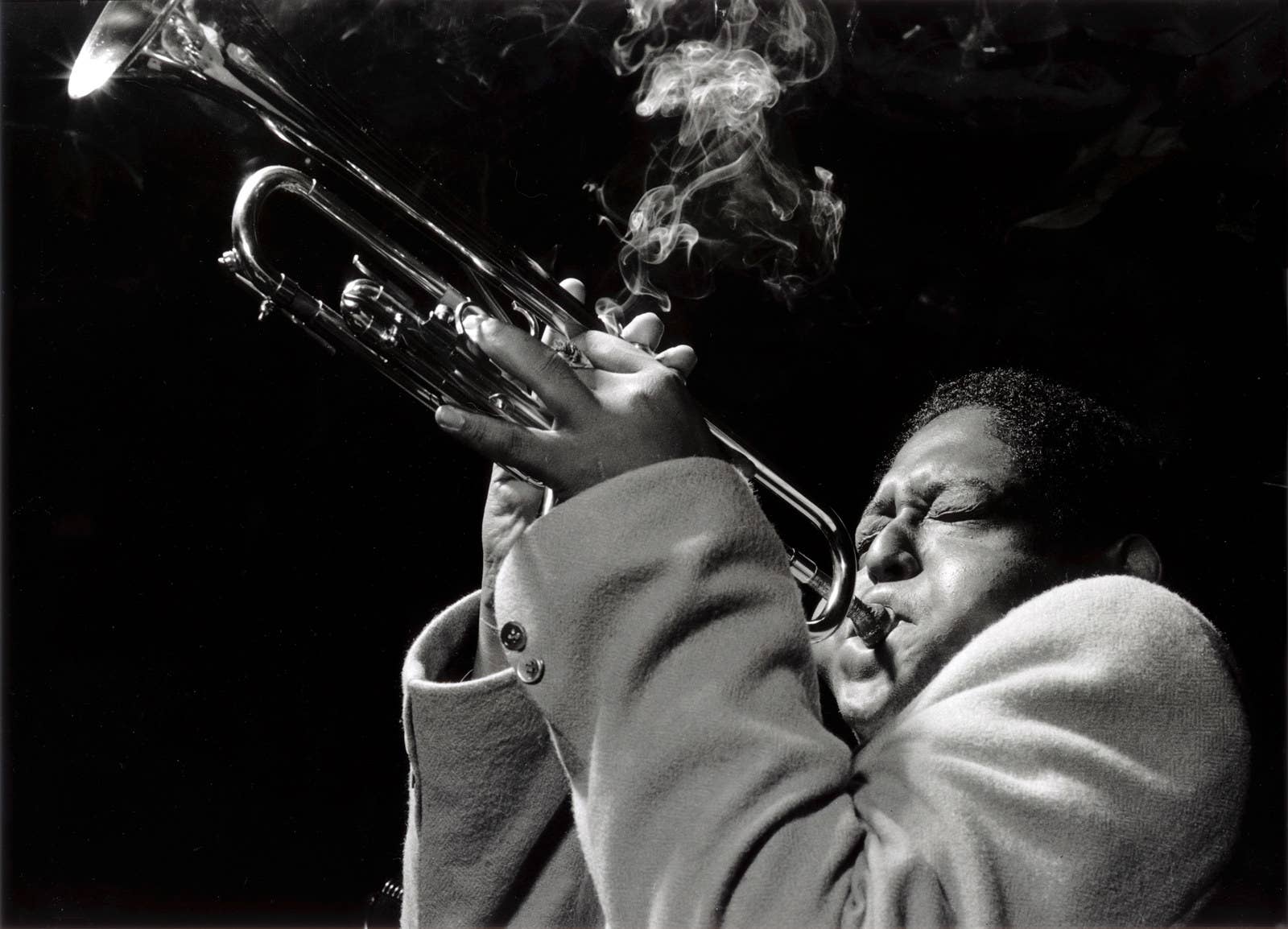
In the 1940s and '50s, photographer Herman Leonard found himself at the center of the jazz universe, front row to some of the most iconic performances by artists like Ella Fitzgerald, Duke Ellington, Frank Sinatra, and Miles Davis. A new exhibition of his work, titled Herman Leonard: The Rhythm of Old New York, is currently installed in New York's Robert Mann Gallery. The series takes a comprehensive look at the artist's prolific career as witness to jazz history.
Here, gallery owner Robert Mann shares his thoughts on the historic significance of Herman Leonard's work and little about the rhythm of old New York:
I’m a native New Yorker. In high school, my friends and I used to travel down to Greenwich Village to hear jazz performers at clubs like the Village Gate and Village Vanguard. Often we were sitting inches from the stage watching and listening to the performers belt out their pieces. As a result I have a particular affinity for jazz and for Leonard’s photographs.
Herman Leonard was truly the preeminent jazz photographer of all time. He was an accomplished portrait photographer, learning from the great Yousuf Karsh, and he could hold his own in advertising and fashion. But Leonard found his calling in photographing jazz musicians. He had a sixth sense about capturing the perfect moment when photographing in the jazz clubs. He not only caught the musicians' most iconic gestures, but also the entire atmosphere of the moment within the single frame.
He became a regular at all the jazz clubs. Every performer knew him and adopted him as one of their own. This special access granted him intimate moments with musicians — he was like a fellow band member and it was what enabled him to get the shots no other photographer could.
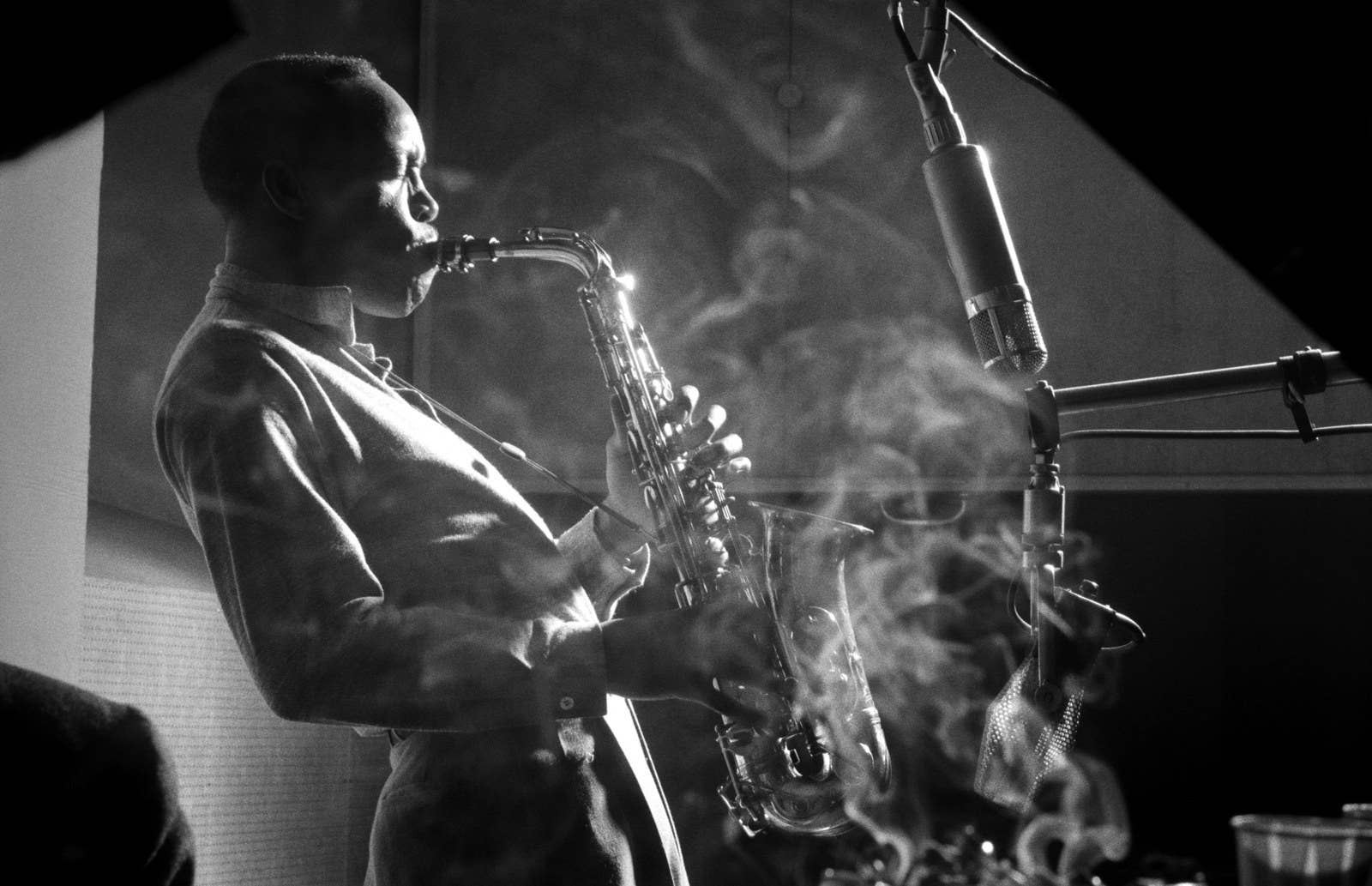
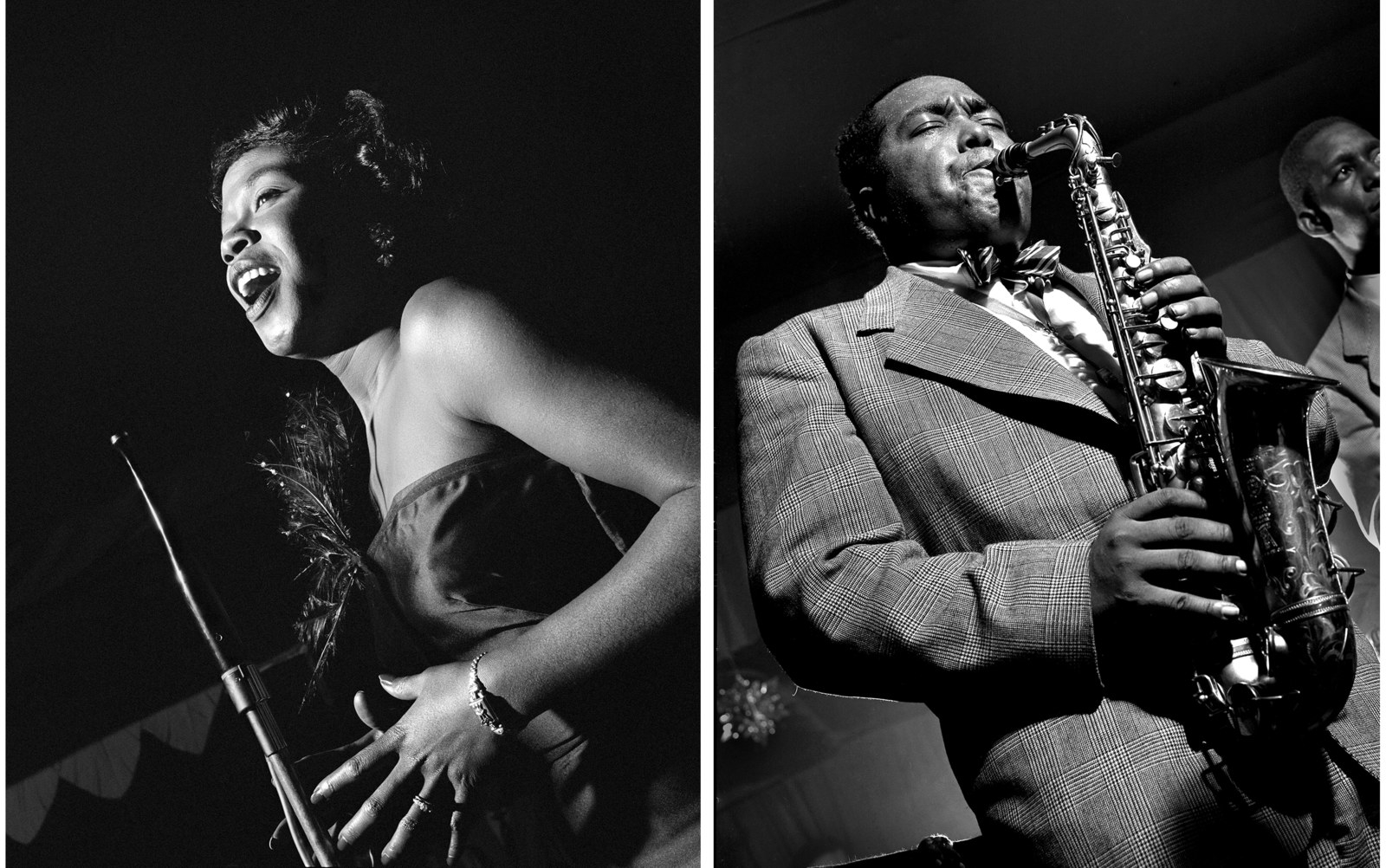

New York and jazz go hand in hand. That New York could not evolve culturally without jazz being a significant component of its music culture, and jazz could not evolve without the energy of New York pushing it forward.
The New York of the 1940s, '50s, and '60s was going through extraordinary cultural growth in all areas, especially in fine art, theater, and music. It’s hard not to sound bias as a native New Yorker, I am aware New Orleans and Paris, among other cities, were also jazz hubs, but in New York, there was so much divergence and experimentation in music. The jazz musicians that remained focused and true to their craft truly epitomized the dynamic energy of the city they were performing in.
Unfortunately, the days of small, dark, and smoky jazz clubs are over. But some of the greatest music was made in those clubs by the performers Leonard documented. We will be listening to jazz for years and years and the visuals associated with that music will have been provided by Leonard.
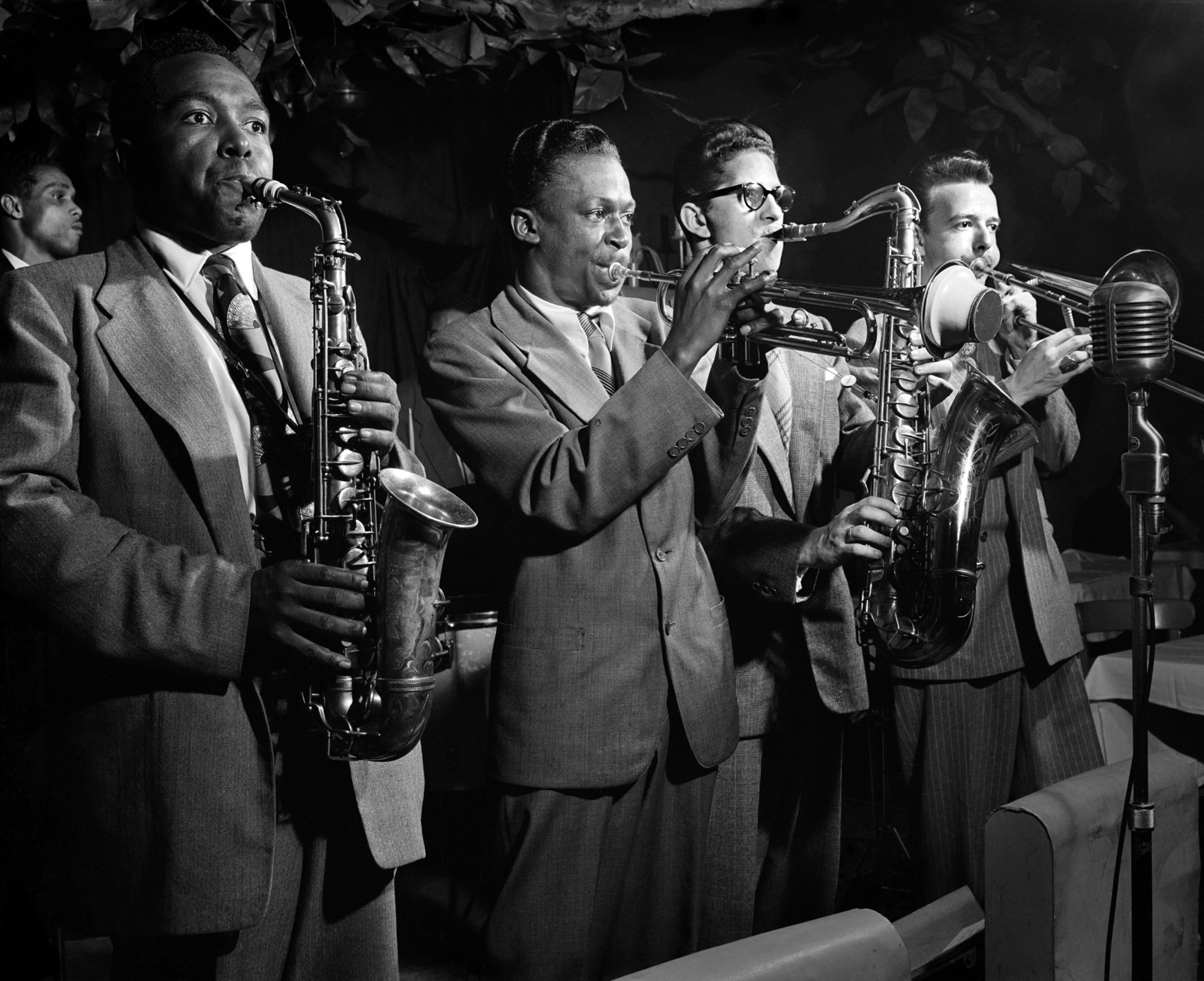
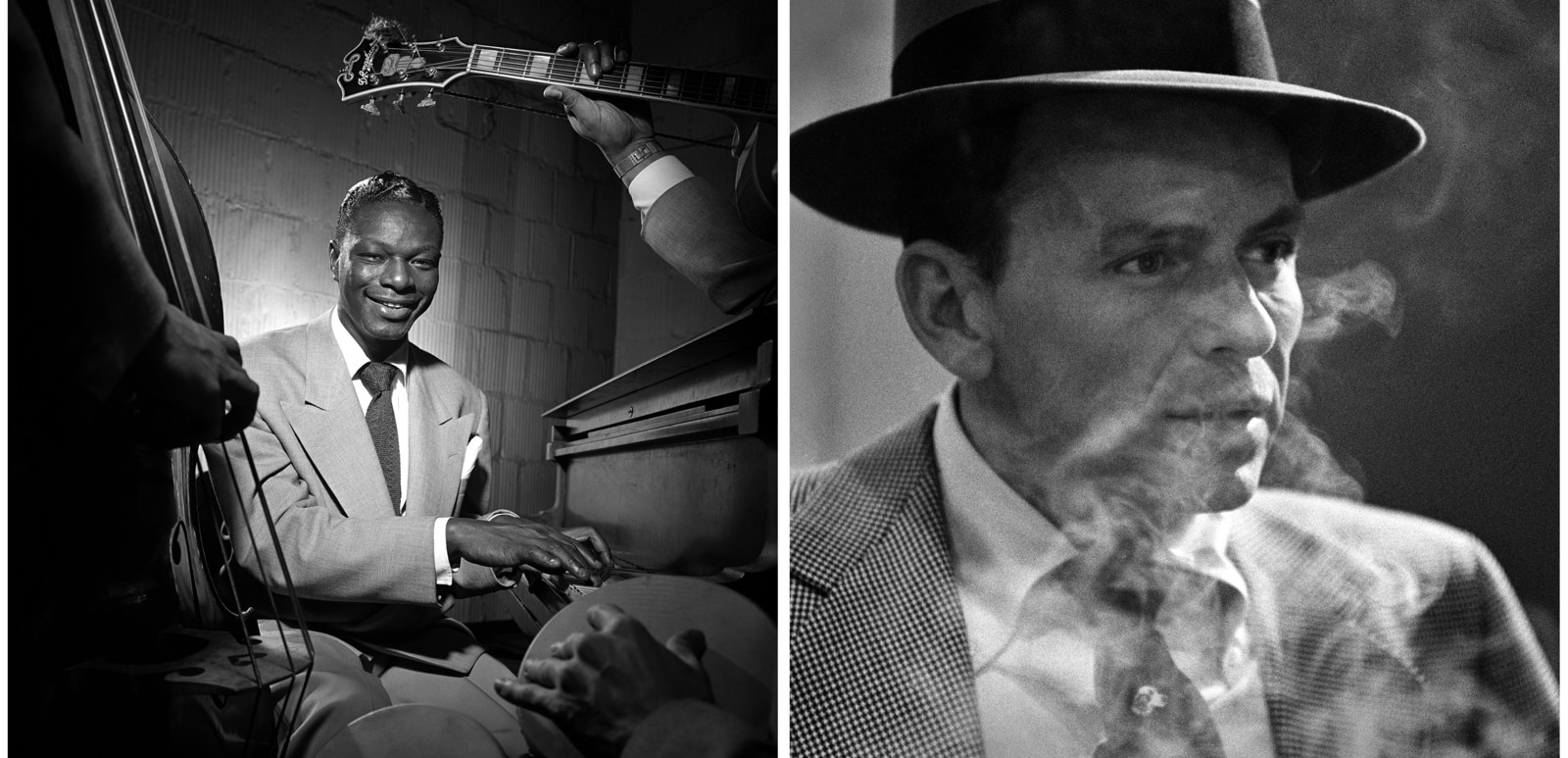
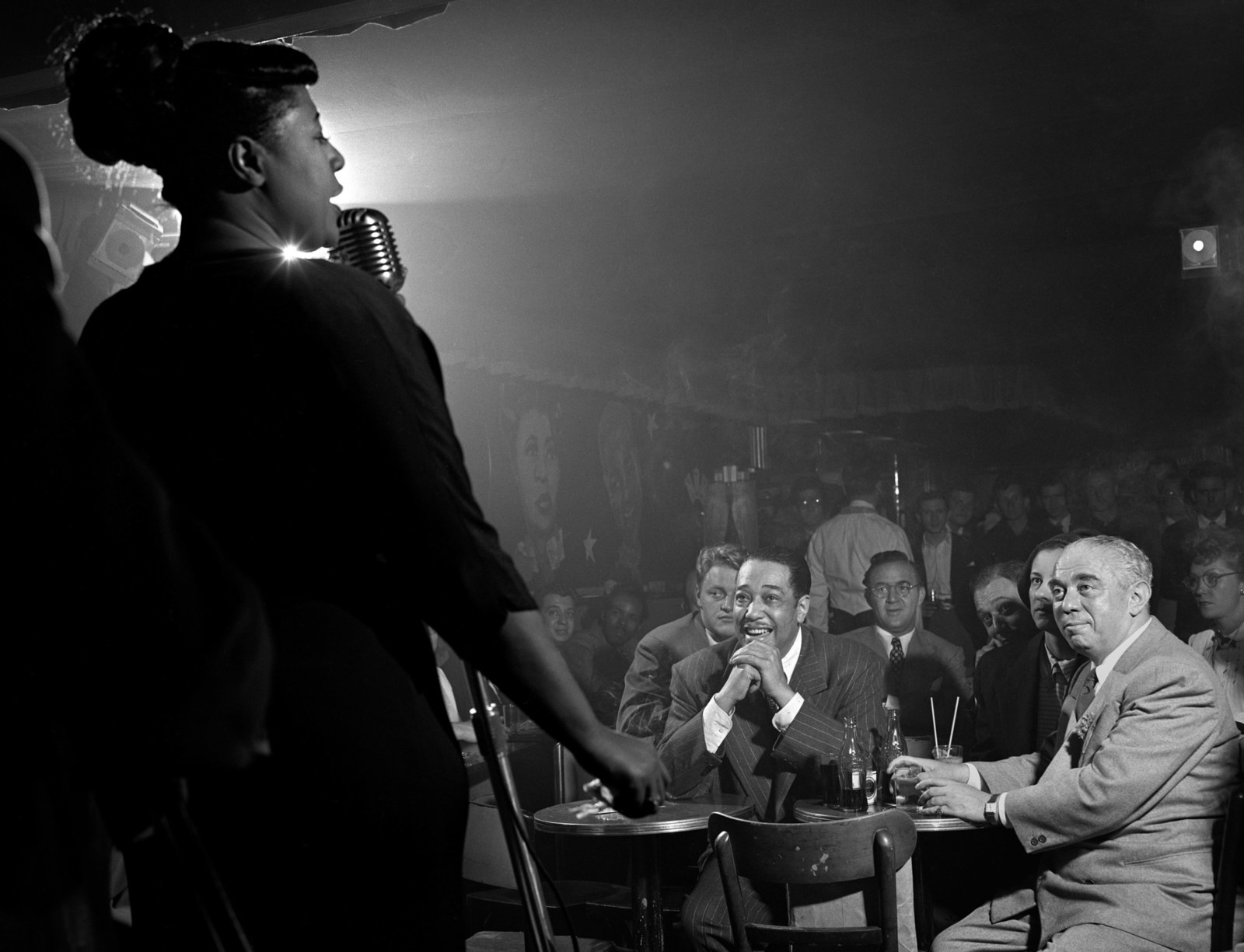
Of all of Leonard's work, it's hard to single out a favorite, but one picture that definitely stands out is the image of Ella Fitzgerald singing into the microphone with Benny Goodman and Duke Ellington sitting in the audience at the Downbeat Club. The photo is layered in perfection — Ella’s eyes are closed as she croons into the microphone, the Duke seems to be in rapture watching her, the lighting in the smoky club is brilliantly captured as it reveals spectators all the way into the background where you also see the wall frescoes of regular performers at the Downbeat Club. It is an amazing moment that Leonard magnificently locked into a single frame!
I hope viewers can get a sense of the intimate settings that Leonard captured, get a feeling of the musicians feeling comfortable performing in their element, and maybe even hear a little jazz resonate in the back of their minds as they view the works.
